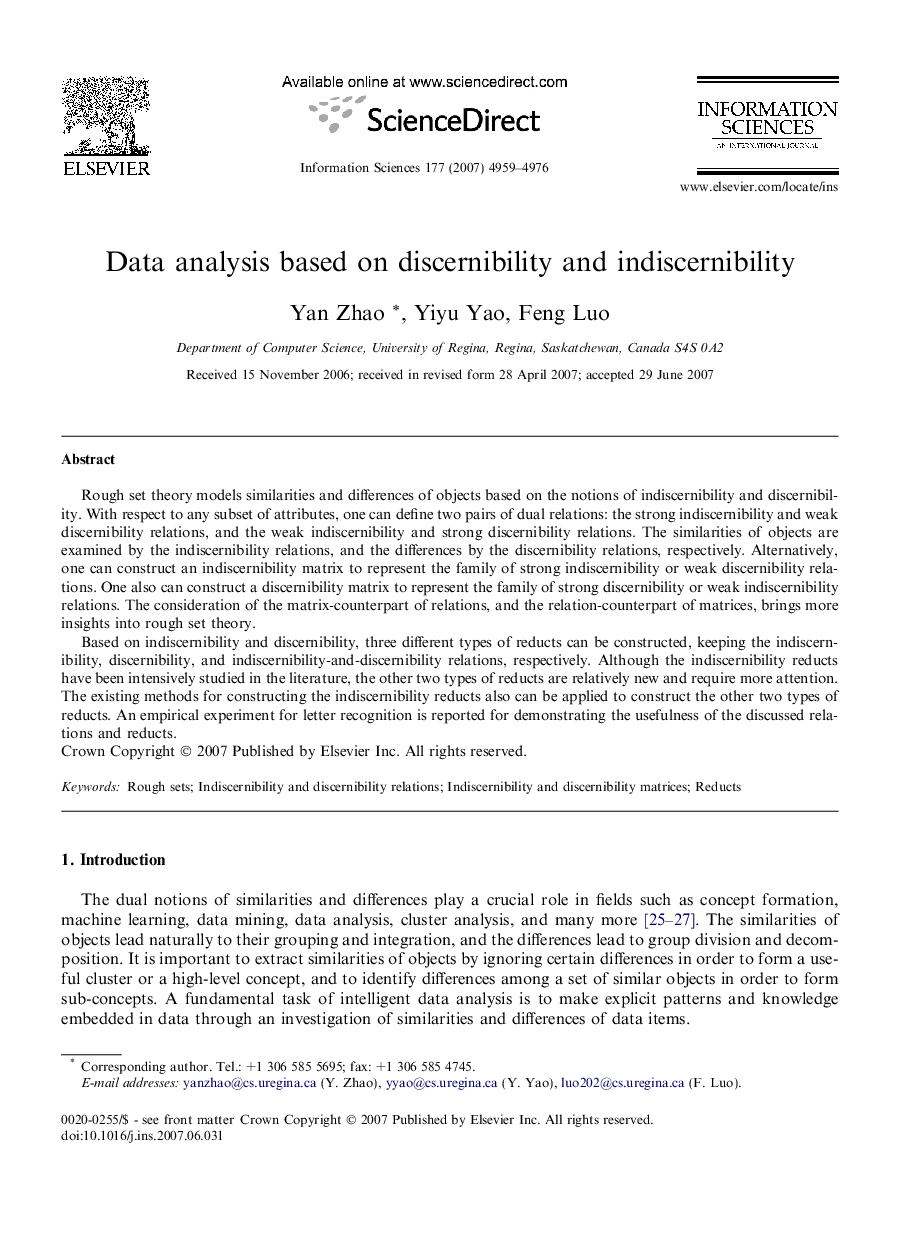| Article ID | Journal | Published Year | Pages | File Type |
|---|---|---|---|---|
| 396106 | Information Sciences | 2007 | 18 Pages |
Rough set theory models similarities and differences of objects based on the notions of indiscernibility and discernibility. With respect to any subset of attributes, one can define two pairs of dual relations: the strong indiscernibility and weak discernibility relations, and the weak indiscernibility and strong discernibility relations. The similarities of objects are examined by the indiscernibility relations, and the differences by the discernibility relations, respectively. Alternatively, one can construct an indiscernibility matrix to represent the family of strong indiscernibility or weak discernibility relations. One also can construct a discernibility matrix to represent the family of strong discernibility or weak indiscernibility relations. The consideration of the matrix-counterpart of relations, and the relation-counterpart of matrices, brings more insights into rough set theory.Based on indiscernibility and discernibility, three different types of reducts can be constructed, keeping the indiscernibility, discernibility, and indiscernibility-and-discernibility relations, respectively. Although the indiscernibility reducts have been intensively studied in the literature, the other two types of reducts are relatively new and require more attention. The existing methods for constructing the indiscernibility reducts also can be applied to construct the other two types of reducts. An empirical experiment for letter recognition is reported for demonstrating the usefulness of the discussed relations and reducts.
